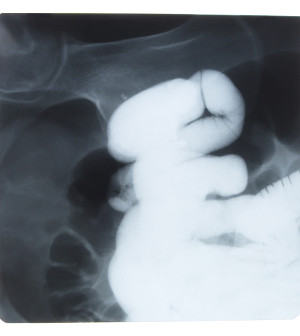- Skip Storing This Everyday Product in the Fridge Door
- Green Tea + B3 Pairing May Boost Brain Health
- Navigating Your Midlife Crisis: Embracing New Possibilities
- City Raccoons Showing Signs of Domestication
- Mapping the Exposome: Science Broadens Focus to Environmental Disease Triggers
- One Week Less on Social Media Linked to Better Mental Health
- Your Brain Changes in Stages as You Age, Study Finds
- Some Suicide Victims Show No Typical Warning Signs, Study Finds
- ByHeart Formula Faces Lawsuits After Babies Sickened With Botulism
- Switch to Vegan Diet Could Cut Your Greenhouse Gas Emissions in Half
Gut Bacteria May Play Role in Crohn’s Disease


The community of bacteria that typically live in the human gut is radically altered in patients with Crohn’s disease, a new study shows.
Overall, patients with Crohn’s have less diversity among their intestinal bacteria than healthy individuals. And certain types of harmful bacteria appear to be increased in Crohn’s patients, while the amounts of beneficial bacteria are decreased, the study found.
Whether those changes are a cause or a consequence of the disease isn’t known. But the discovery may help doctors diagnose patients more quickly and it may point the way to new treatments for the disease, which is estimated to affect about 700,000 people in the United States.
For the study, researchers recruited nearly 500 patients who were newly diagnosed with Crohn’s disease and more than 200 who were having intestinal problems without inflammation.
Crohn’s causes frequent bouts of diarrhea, abdominal pain, cramping and bleeding. The disease may be diagnosed at any age, but it tends to strike early in life. Patients who participated in this study were between the ages of 3 and 17.
Researchers needed to catch the patients early because they wanted to see what was going on in the gut before they had taken any medications that might have changed the bacterial picture.
Doctors took tissue samples from two different places in the gut — at the beginning and the end of the large intestine. They also collected stool samples from some patients. They then extracted all the genetic material they found. With the help of powerful computers, they targeted almost 46 million specific sequences of DNA present in the samples, says the study published March 12 in the journal Cell Host & Microbe.
These sequences acted like barcodes to identify the genetic signatures of the bacteria that were present, explained study researcher Dirk Gevers, a computational biologist at the Broad Institute, a joint project of MIT and Harvard in Cambridge, Mass.
Researchers confirmed those findings by checking them against samples taken from 800 more people who had participated in other studies.
Six types of harmful bacteria were elevated in patients with Crohn’s compared to those without inflammation, while levels of four varieties of bacteria that are thought to be beneficial to digestion and health were lower in those patients. The differences were even more pronounced in patients who had the most severe symptoms.
“We now know which organisms should be studied more closely,” Gevers said.
About 10 percent of patients in the study were taking antibiotics — not for Crohn’s, but for other reasons when the tissue samples were taken. Antibiotic treatment seemed to aggravate the bacterial imbalances seen in the study even further, suggesting that doctors may want to steer clear of these drugs, which are commonly prescribed for Crohn’s.
“We should probably be wary of giving antibiotics in the early stages of Crohn’s disease, because we may not be accomplishing what we want to accomplish,” said Dr. Balfour Sartor, a distinguished professor of microbiology and immunology at the University of North Carolina School of Medicine in Chapel Hill.
“Because most of the antibiotics that are used in Crohn’s disease are broad-spectrum antibiotics, you’re basically hitting both the beneficial and detrimental bacteria in the process, and maybe that’s really not a good idea,” said Sartor, who is also the chief medical advisor for the Crohn’s and Colitis Foundation, which helped fund the study. He was not involved in the research.
It’s impossible to say whether the bacteria were present in response to the inflammation or if they may have caused it.
Sartor thinks it may be some of both. He said inflammation undoubtedly changes the bacterial environment. But some studies in mice have offered evidence that the bacteria may be the root of the illness. Those studies have shown that transferring gut bacteria from mice with Crohn’s-like inflammation to healthy, germ-free animals can make healthy mice ill.
“There’s pretty good evidence that some of these bacteria have causative and preventative activities, rather than just being secondary to the inflammatory response,” Sartor said.
Now that doctors have a bacterial signature for the disease, Sartor thinks there may soon be a time when they can take a quick tissue sample and quickly know if they are looking at Crohn’s.
Right now, he said, it takes an average of three years for doctors to diagnose someone who’s having symptoms. And most patients get two incorrect diagnoses before doctors zero in on the true cause of their problems.
More information
Visit the U.S. Centers for Disease Control and Prevention to learn more about Crohn’s and other kinds of inflammatory bowel diseases.
Source: HealthDay
Copyright © 2025 HealthDay. All rights reserved.










